My Five Favorite Restaurants in Rome, Edition Number 4
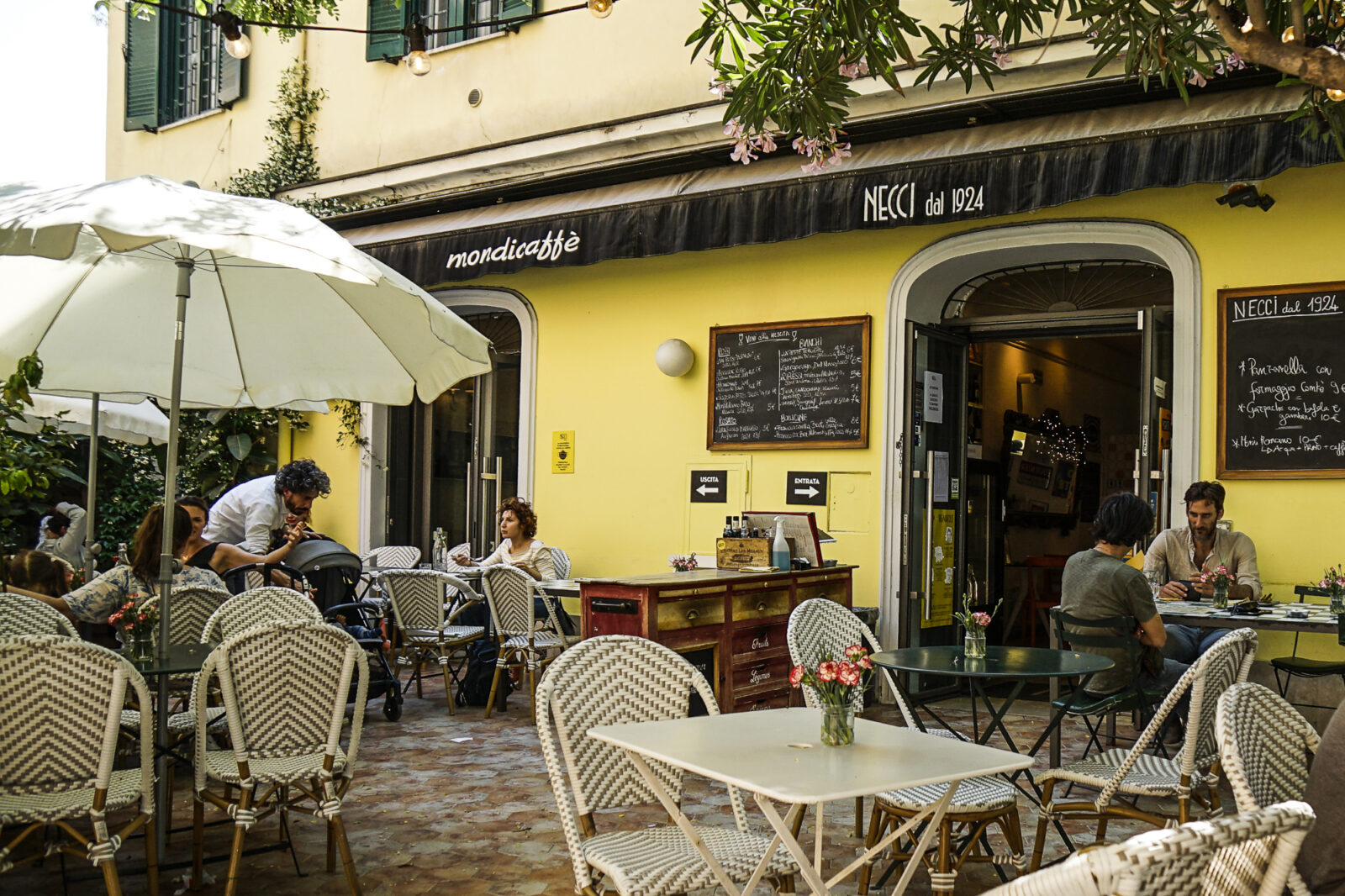
I hear from many expats in Italy, some of whom followed the romantic siren’s call of a small town in the countryside. Frances Mayes’ “Under the Tuscan Sun” in 1996 made rural Tuscany seem like Nirvana with better pizza. Ads selling fix-me-ups in villages for a few centesimi lured foreigners into towns with more sheep than people.
Me? I never bought the hype. For nine years I’ve lived in Rome. I’m right near the heart, 2 1/2 miles from the Colosseum. I live amid the garbage, the lousy public services, the worthless post office, the random public transportation, the mortared roads.
It’s still paradise. It’s not just the unmatched beauty, the remarkable history, the friendly people and the countless museums. It’s this:
In 2022, I went to 50 different restaurants here, many for the first time. Each one seemed better than the last. I could live in Rome until I die and never go to all the good restaurants in this city. Food in rural Italy is excellent. But I’d tire of a town’s lone charming trattoria after two turns of the entire menu.
Rome’s variety and quality make it hard to answer a common question from visitors: Recommend a good place to eat? It’s like asking a Dubliner, Know a good pub in town?
But I try. This week I am updating my Five Favorite Restaurants in Rome list. This is my fourth edition after 2016, 2019 and 2022 and none should be confused with my five favorite restaurants in Italy.
My list has a caveat. Restaurants that fell off the list didn’t decline. I just fell for a few others after frequenting them more last year. It’s like your last lover is always the best, right?
So here’s my list for 2023. I’ve been to all five many times and highly recommend them. Ironically, Marina would like us to live in a small Tuscan town some day. I’m all for it. The slower pace. The rural beauty. The interesting locals. But I think I will long for turning a cobblestone corner and discovering a restaurant I’m dying to try.
Here are five in Rome you should. (Neighborhoods in parentheses. Phone numbers do not include 39 country code.)
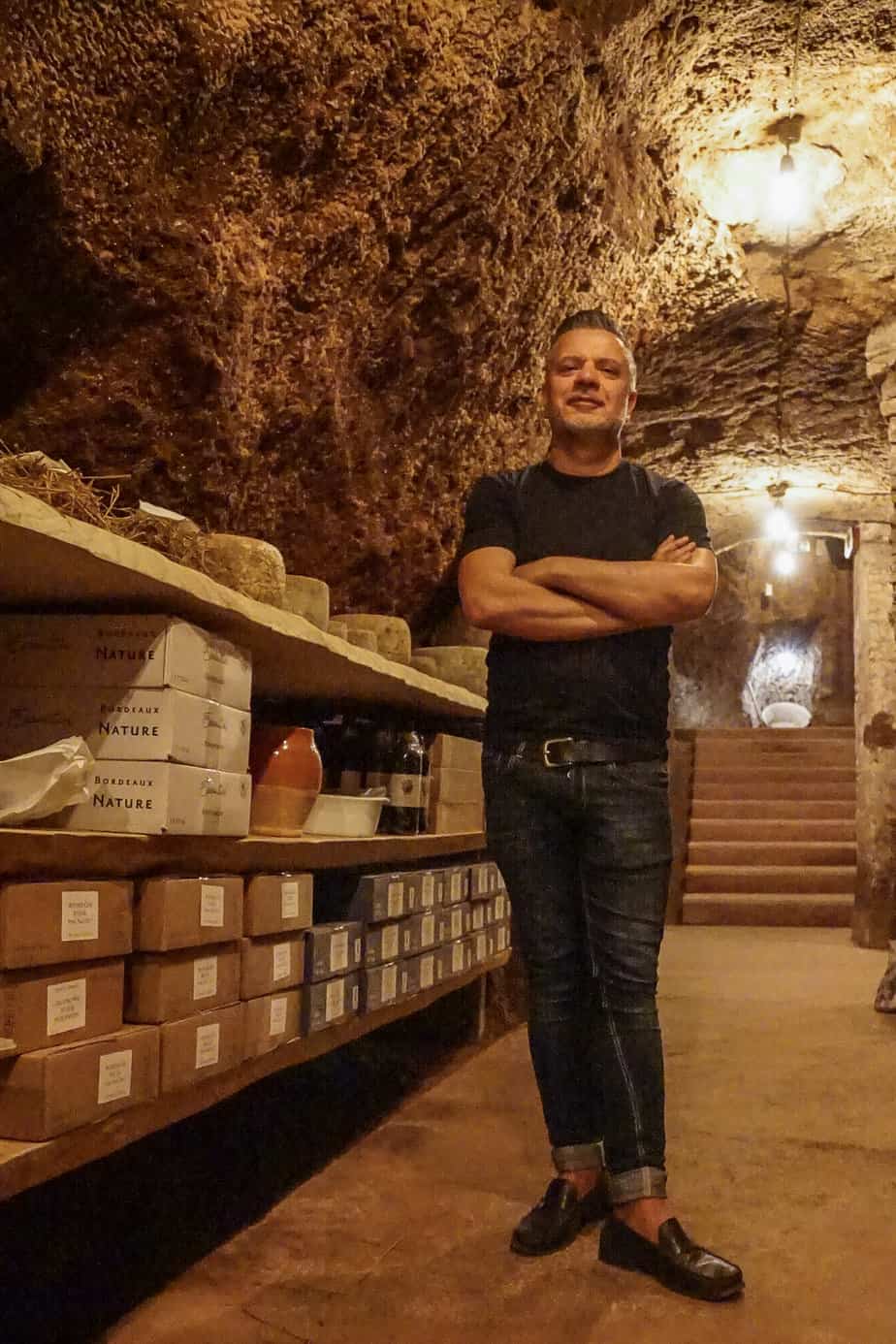
Necci dal 1924 (Pigneto)
Info: Via. Fanfulla da Lodi 68, 06-9760-1552, https://www.necci1924.com/, info@necci1924.com, 8 a.m.-1 a.m. Sunday-Thursday, 8 a.m.-2 a.m. Friday-Saturday.
I discovered Necci while researching a story for the BBC last fall about pecorino cheese. It’s located in the gritty Pigneto neighborhood east of the Termini train station and the building has been around since 1924. Owner Massimo Innocenti bought the place in 2006 and one day in 2020 he decided to build a wine cellar. He dug under the floor a few centimeters and discovered … a huge 2,000-year-old cave.
Research revealed it once held pozzolana, a volcanic sand used for making cement in Ancient Rome. With near perfect temperature and humidity, Innocente decided to use the cave to store his variety of pecorino.
His eclectic menu features pecorino in nearly every dish. Take his carciofi alla giudia con crema di Pecorino e crostini alla paprika (Jewish-style artichoke in Pecorino Romano cream and paprika croutons). I don’t even like carciofi. But the thick pecorino sauce makes this artichoke more than palatable.
Then there is the pici di grano saraceno (buckwheat pasta with pumpkin, pig’s cheek and chestnuts in a Pecorino Romano sauce). My favorite is the insalata di gamberi alla padella con porri zenzero cialde di Pecorino e riduzione di aceto balsamico (pan-fried prawn salad in a Pecorino Romano basket with leeks and ginger in a balsamic vinegar reduction). After eating the balsamic-coated shrimp, you eat the basket like a giant pecorino cracker.
His cheese plates feature designer pecorino such as Pecorino al Peperoncino, with specks of chili pepper; Pecorino Semistagionato, a soft cheese seasoned for three to six months; and Pecorino Gran Riserva, a top-line Pecorino seasoned 10-24 months.
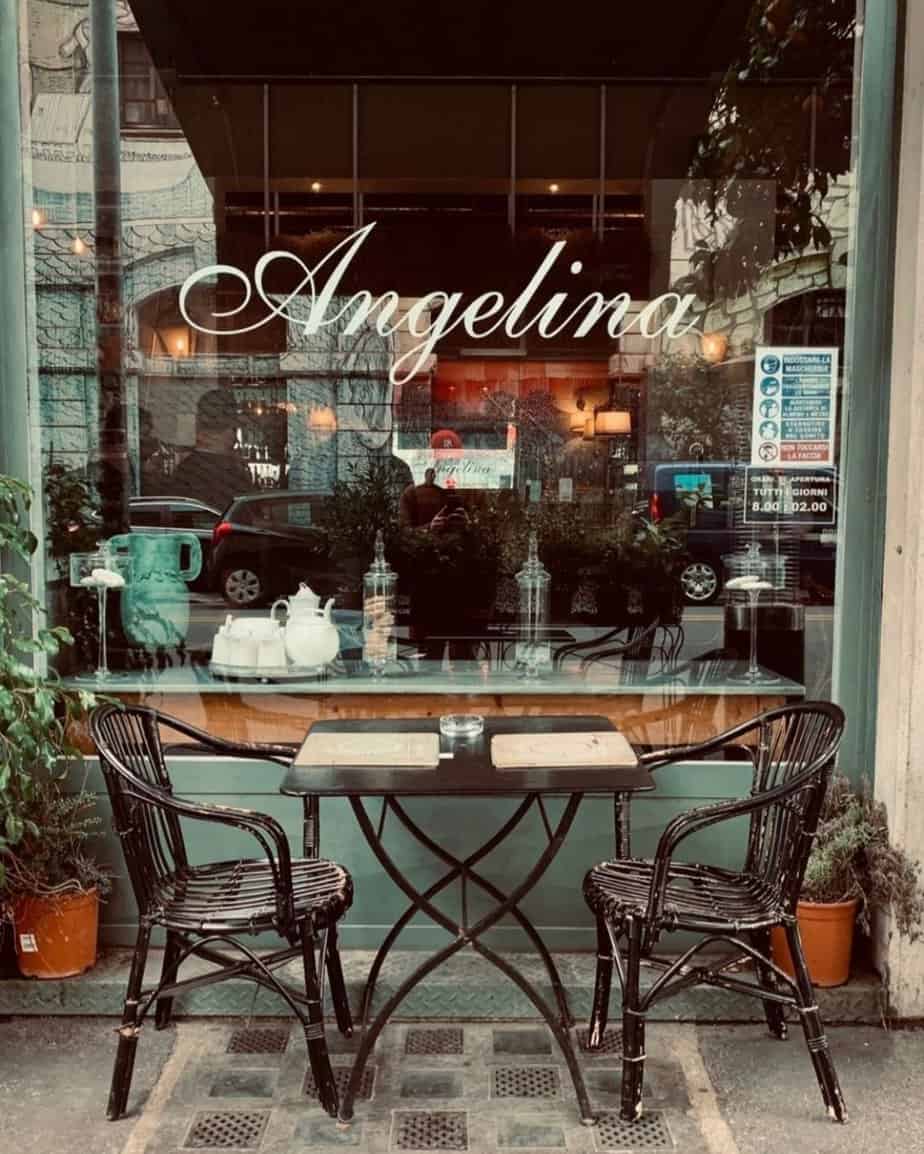
Angelina (Testaccio)
Info: Via Galvani 24a, 06-5728-3840, http://www.ristoranteangelina.com/ristorante-angelina-a-testaccio.html, 12:30-3 p.m., 7:30-11:30 p.m.
I lived in Testaccio for four years and never ate here. Via Galvani is a famous road that goes past Monte Testaccio, the giant pile of 2,000-year-old scraps of terracotta pots used to store wine, grain and olive oil when Testaccio was an Ancient Roman port.
Originally, Angelina’s building was used for livestock sales as it stands about 100 meters from Rome’s old slaughterhouse where giant meat hooks and animal stalls can still be seen.
Since moving away I’ve frequented Angelina numerous times. Angelina’s sprawling upstairs terrace swayed me, especially on warm summer evenings or mild winter afternoons. You eat an excellent variety of local dishes in a garden atmosphere surrounded by olive and lemon trees.
The romantic atmosphere doesn’t take anything away from the food. Angelina has all the traditional Roman dishes, many of which originated in this neighborhood, such as rigatoni all’amatriciana, cacio e pepe and spaghetti carbonara. They start at €13.
But it’s also creative. I love the homemade paccheri with Genovese codfish in puttanesca sauce. It also has Florentine and Danish steaks and don’t miss the passion cheesecake with a crunchy brown sugar biscuit, mango, fresh cheese sauce and passion fruit sauce.
Wash it all down from its menu of Spritz cocktails.
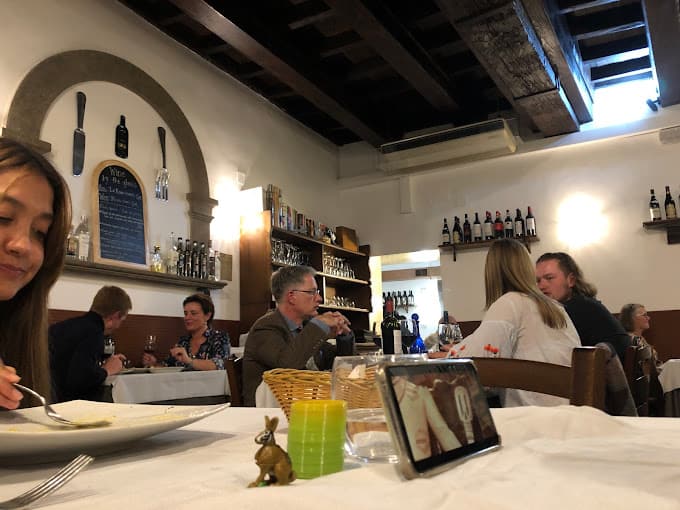
Renato e Luisa (Centro Storico)
Via dei Barbieri 25, 06-686-9660, https://renatoeluisa.it/, 7:30-11 p.m. Tuesday-Saturday, 1-3 p.m. Sunday.
This was No. 1 in my last two ratings. It still is excellent. I just feel a need to spread the love. Renato e Luisa remains the one restaurant I recommend to visitors, for two reasons: One, it’s centrally located in Centro Storico, down an alley from the historic ruins of Torre Argentina where Julius Caesar was murdered; two, it’s where local Romans recommended I go when I moved here.
They’re right. It’s Roman cuisine with a gourmet twist. It still has my favorite appetizer in town: goat cheese with pralines, walnuts and honey. I never dine here without that as a starter. I also return to the fettuccine pachino e ricotta di bufala (Flat pasta noodles with buffalo ricotta and cherry tomatoes).
They also take the famous Roman dish, saltimbocca alla romana, and cook it in Marsala and apples. I don’t eat much red meat in Rome but I often get the sliced beef in balsamic vinegar.
Renato, who speaks English and will explain all the dishes, is the son of a famous butcher from the neighborhood and taught himself how to cook. His signature dish is cacio e pepe e fiori di zucca (pasta with pepper and pecorino cheese and courgette flowers).
His homemade tiramisu may also be the best in town.
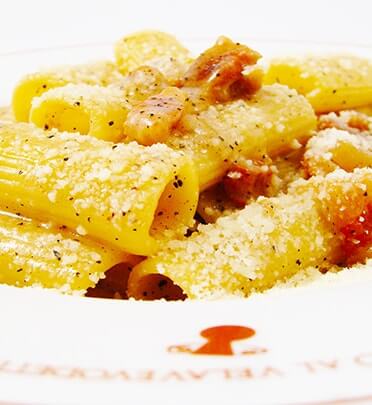
Flavio al Velavevodetto (Testaccio)
Via di Monte Testaccio 97, 06-574-4194, https://www.ristorantevelavevodetto.it/prenota-testaccio-online.html, info@restorantevelavevodetto.it, 12:30-3 p.m., 8-11 p.m.
Another Testaccio gem I’d never been to until moving away, Flavio is down the street from Angelina. It’s on the ring road lined with bars and clubs where young adults rock until the wee hours of the morning.
But Flavio stands out. With its terracotta walls mirroring the adjacent Monte Testaccio and its open-air veranda, it has the air of a Mexican hacienda. But Flavio is as Roman as it gets. And go there for one dish.
Pasta carbonara.
It’s one of Rome’s signature dishes and Flavio’s has been considered the best in Rome. In fact, it won the Best Carbonara in Rome contest held by the cuisine website, Tavoleromane.it. Da Enzo al 1927 in Trastevere across the river will argue for king carbonara status but I rank Flavio higher just for its open-air atmosphere.
Food writer and historian Katie Perla ranked Flavio one of the 38 best restaurants in Rome in The Eater Guide, and The Culture Trip ranked it among the top 10.
Owner Flavio De Maio is a Roman from the Garbatella neighborhood just south of Testaccio and opened Flavio with Marco Andreini in 2009. De Maio’s lifetime goal, he said in his book, “The Innkeeper Next Door,” is, “If I could choose how to leave this world, I’d like to make a perfect carbonara.”
It’s spectacular. Creamy but not soupy as many are, its guanciale (pig’s cheek) and pancetta (bacon) are as lean as any I’ve had. You can even find the recipe on the website. Also, his cacio e pepe is terrific and all his vegetables come from the property’s garden.

Sora Pia (Aurelio)
Via Aurelia 426, 06-662-6112, 12-3 p.m, 7:30-11 p.m. Monday-Saturday, 12-3 p.m., 6-11 p.m. Sunday
With every list I try to include a restaurant off Rome’s much-beaten path. Aurelio is a sprawling retail neighborhood and transportation hub one subway stop short of the end of Metro’s A Line. It’s almost three miles from Centro Storico but on the Metro from Termini it’s about 15 minutes.
Sora Pia is a small trattoria not far from Cornelia’s Metro stop and huge bus stop. The restaurant reminds you of an Italian grandmother’s kitchen. The dining room is simple, small and homey. An elderly staff whisk dishes to you with loving care.
It has been around since 1890, first near St. Peter’s, and lays claim to being the oldest neighborhood restaurant in the city. Pia Sacrestani opened it 133 years ago when she was only 16 years old.
You won’t find tourists here. What you’ll find are locals digging into inexpensive dishes that start at €9 for primi piatti (first dishes) and €12 for secondi (second). There’s a whole list of risotto (thick rice soup) dishes such as risotto alla crema di scampi (with prawns). Also try the fried calamari and gamberi.
But save room for Sora Pia’s torta della nonna (grandmother’s cake), a sweet pastry cake from Tuscany with vanilla-flavored custard and covered with pine nuts and confectioner’s sugar.


February 8, 2023 @ 1:32 am
Ciao John
I wanted to try Renato e Luisa last year, ended up going to a Sardinian restaurant in Garbatella, L’isola dei Sardi with my Roman friends. I finally got to try curlugiones, but next time i hope i have them in Sardegna! I have had carbonara at Flavio al Velavevodetta an it was yummy. Hopefully i’ll make it to R&L this year. So many great restaurants in Roma-too little time! Hope you are doing well. Ciao, Cristina
February 9, 2023 @ 3:21 am
Good work John snd we’ll designed!
February 9, 2023 @ 7:22 am
Great suggestions. Your blogs and Stanley Tucci’s wonderful TV food series “Searching for Italy” on CNN (have you seen it yet?) are combining to make us homesick for Roma. We’re going to try and visit later this year and will meet you for dinner one evening.
On the other hand, tomorrow night we’re going out for New Mexican-style eats, which you are not going to find in your fair city. Tequila lime chicken, calabacitas, guacamole with homemade chips, a margarita or two, finished off with a sopapilla… I’m guessing you do miss that from your Colorado days.
Happy eating, my friend!